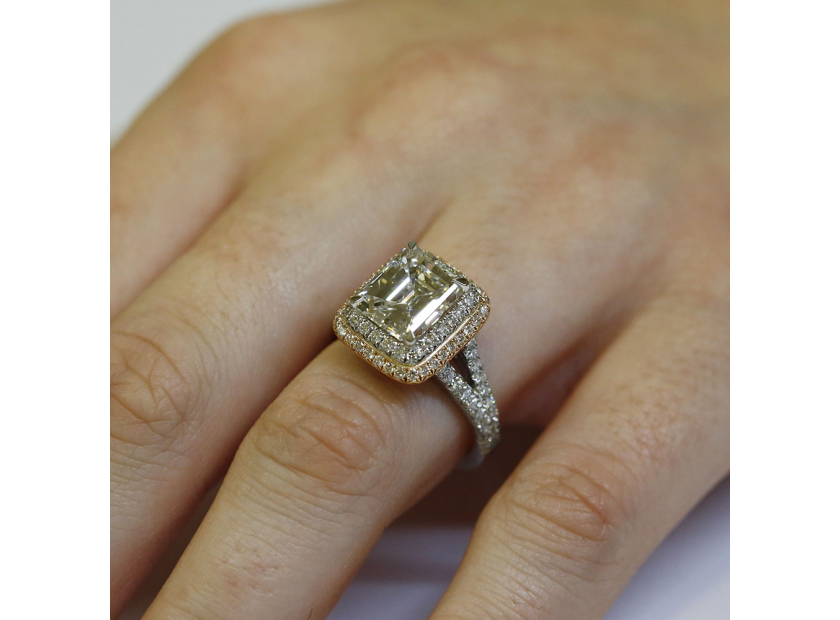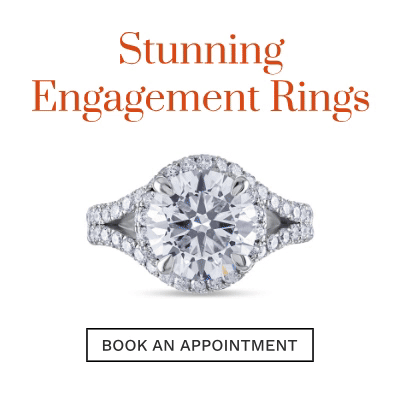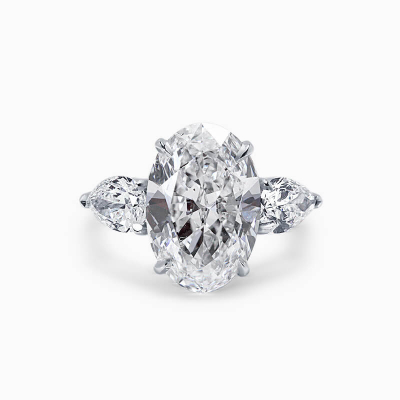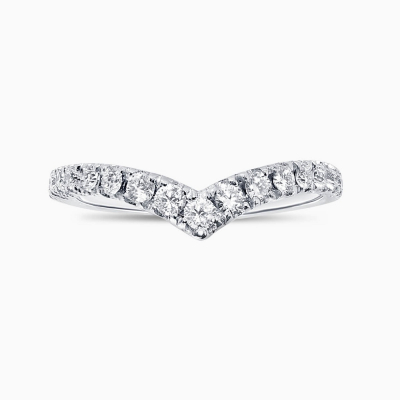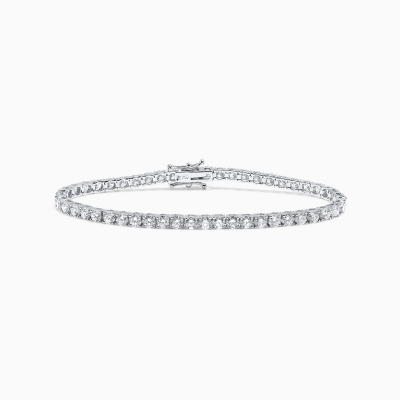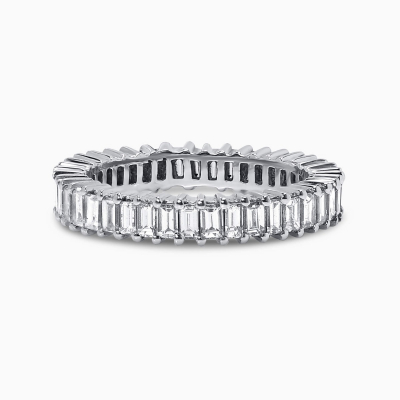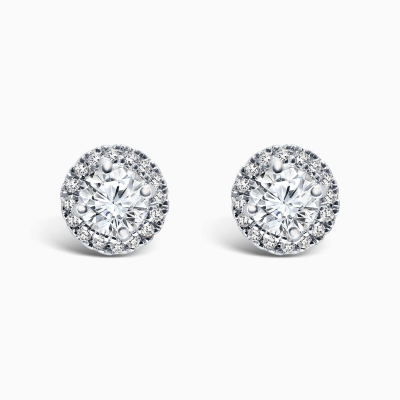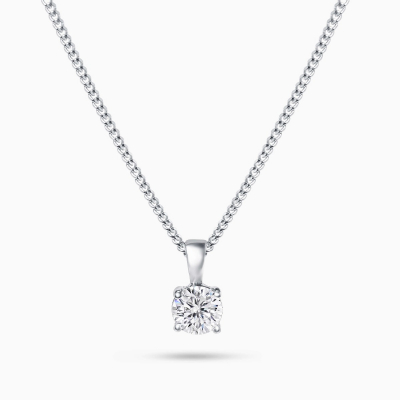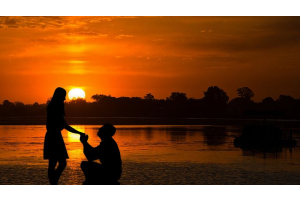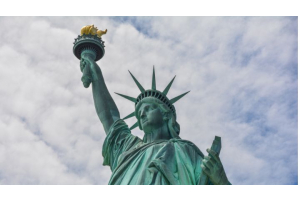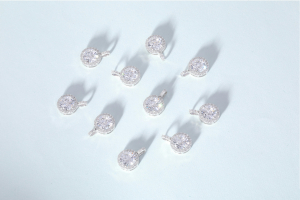USD
/
USD
/
Shipping to:
Currency:
The Fascinating History of the Engagement Ring
Posted:
November 07, 2017
6 min read
The tradition of giving an engagement ring has deep roots, spanning centuries and traversing different cultures. This cherished symbol of love and commitment has evolved significantly over time, reflecting changes in society, economics, and personal tastes. From its ancient origins to the modern era, the engagement ring has been a powerful emblem of promise and partnership, making it one of the most enduring customs in human history.
Ancient Beginnings
The history of the engagement ring can be traced back to ancient times. The Egyptians are often credited with the earliest use of rings to symbolize a bond between partners. They believed that the circular shape of a ring represented eternity, making it a fitting symbol for a union meant to last forever. Rings were typically made of braided reeds or hemp, and were worn on the fourth finger of the left hand, which they believed contained the "vena amoris," or the vein of love, directly connected to the heart.
The Romans later adopted the practice of giving rings, but with a slightly different emphasis. Roman engagement rings were often made of iron, symbolizing strength and permanence. They also introduced the concept of using a ring to signify ownership, where the ring was a public declaration that a woman was "betrothed" and no longer available for courtship.
The Medieval and Renaissance Periods
During the Medieval era, the significance of the engagement ring continued to grow. The use of more precious materials, such as gold and gemstones, became more common among the nobility. The diamond ring, as we know it today, is believed to have been introduced in 1477 when Archduke Maximilian of Austria presented Mary of Burgundy with a diamond ring, marking the first recorded use of a diamond to signify engagement. This act not only set a trend among European aristocracy but also elevated the diamond as the premier stone for engagement rings.
The Renaissance period saw further developments in the design and symbolism of engagement rings. Rings became more ornate, often featuring intricate engravings, and the inclusion of gemstones became more widespread. The posy ring, inscribed with romantic verses or declarations of love, became particularly popular during this time, adding a personal and poetic element to the engagement ring tradition.
The Victorian and Edwardian Eras
The Victorian era brought about a romantic revival of the engagement ring, influenced by the love story of Queen Victoria and Prince Albert. Engagement rings from this period often featured a combination of diamonds and coloured gemstones, set in elaborate designs inspired by nature, such as flowers and hearts. The use of diamonds became more accessible due to the discovery of diamond mines in South Africa, leading to a wider adoption of diamond engagement rings among the middle class.
In the Edwardian era, engagement rings continued to evolve, with designs becoming more delicate and intricate. Platinum became the metal of choice for settings, allowing for more detailed and lace-like designs that reflected the elegance of the period. Diamonds remained the centerpiece, often surrounded by smaller diamonds or other precious stones, creating a halo effect that enhanced the ring's brilliance and opulence.
The 20th Century and the Rise of the Diamond Engagement Ring
The modern concept of the diamond engagement ring as the ultimate symbol of love and commitment was solidified in the 20th century, largely due to the influential marketing campaign by De Beers in the 1940s. The famous slogan "A Diamond is Forever" became synonymous with the idea that diamonds are the perfect representation of an unbreakable bond. This campaign not only popularized the diamond engagement ring but also established it as a cultural norm in many parts of the world.
Throughout the 20th century, the design of engagement rings continued to reflect the changing tastes and values of society. The solitaire diamond ring, featuring a single diamond set on a simple band, became a classic and timeless choice. In the latter half of the century, more couples began to personalize their engagement rings, choosing unique designs, alternative gemstones, or even custom-made rings that reflected their individual style and love story.
Contemporary Trends in Engagement Rings
Today, engagement rings come in a wide variety of styles, reflecting the diverse tastes and values of modern couples. While diamonds remain the most popular choice, there is a growing trend towards using alternative gemstones, such as sapphires, emeralds, and even moissanite, which offer a different aesthetic and often a more affordable option. Ethical considerations have also become increasingly important, with many couples opting for conflict-free diamonds or lab-grown diamonds to ensure that their ring aligns with their values.
In terms of design, contemporary engagement rings often blend traditional elements with modern touches. Vintage-inspired rings, featuring intricate details and antique cuts, are popular among those who appreciate the charm of earlier eras. On the other hand, minimalist designs, characterised by clean lines and understated elegance, appeal to those who prefer a more modern and subtle approach. Customization has become a key trend, with many couples choosing to create bespoke rings that are truly one-of-a-kind, symbolizing their unique journey together.
Explore Our Collections
FAQs
Why is the engagement ring worn on the fourth finger of the left hand?
The tradition of wearing the engagement ring on the fourth finger of the left hand dates back to ancient Egypt and Rome. It was believed that this finger contained the "vena amoris," or vein of love, which was thought to be directly connected to the heart, symbolising the love and commitment between partners.
When did diamonds become the most popular choice for engagement rings?
Diamonds became the most popular choice for engagement rings in the late 19th and early 20th centuries. The trend was significantly boosted by De Beers' marketing campaign in the 1940s, which popularized the idea that "A Diamond is Forever" and established diamonds as the ultimate symbol of enduring love.
What are some popular alternatives to diamond engagement rings?
Popular alternatives to diamond engagement rings include gemstones such as sapphires, emeralds, rubies, and moissanite. These stones offer unique colours and qualities, providing a distinctive look for those who want something different from the traditional diamond.
Are vintage engagement rings still in style?
Yes, vintage engagement rings are still very much in style. Many couples are drawn to the charm and history of vintage designs, often choosing rings that feature intricate details, antique cuts, or unique settings from earlier periods. These rings offer a timeless appeal that continues to captivate.
What is the significance of the solitaire diamond ring?
The solitaire diamond ring, featuring a single diamond set on a simple band, is significant because it represents the purity and singularity of true love. This classic design has become a timeless choice for engagement rings, symbolising the enduring bond between two people.
How can I ensure that my engagement ring is ethically sourced?
To ensure that your engagement ring is ethically sourced, consider purchasing conflict-free diamonds or lab-grown diamonds. Look for certifications from reputable organisations, such as the Kimberley Process, which helps to prevent the trade of conflict diamonds. Additionally, some jewellers specialize in ethically sourced and sustainable materials, offering peace of mind to conscientious consumers.
Is it common to customise engagement rings?
Yes, customising engagement rings has become increasingly common as couples look to create a ring that is unique to their relationship. Customisation allows for personal touches, such as choosing specific gemstones, designing a unique setting, or engraving a meaningful message, making the ring truly one-of-a-kind.
What trends are emerging in contemporary engagement rings?
Emerging trends in contemporary engagement rings include the use of alternative gemstones, minimalist designs, and vintage-inspired styles. Additionally, there is a growing focus on ethical sourcing and sustainability, with more couples opting for conflict-free or lab-grown diamonds. Customisation also remains a popular trend, allowing for the creation of bespoke rings that reflect the individual style and values of the couple.
Why are engagement rings typically given during a proposal?
The tradition of giving an engagement ring during a proposal is rooted in the idea of making a public and symbolic commitment to marry. The ring serves as a tangible representation of this promise, signifying the intent to spend a lifetime together. Over time, this gesture has become an integral part of the marriage proposal, adding to the significance and emotion of the moment.
What materials are commonly used in engagement rings?
Common materials used in engagement rings include precious metals such as gold (yellow, white, and rose), platinum, and palladium. These metals are chosen for their durability and aesthetic appeal. The centre stone is typically a diamond, but other gemstones like sapphires, emeralds, and rubies are also popular choices. Additionally, some rings feature a combination of diamonds and coloured gemstones, offering a unique and personalised design.


